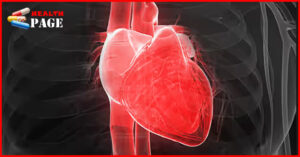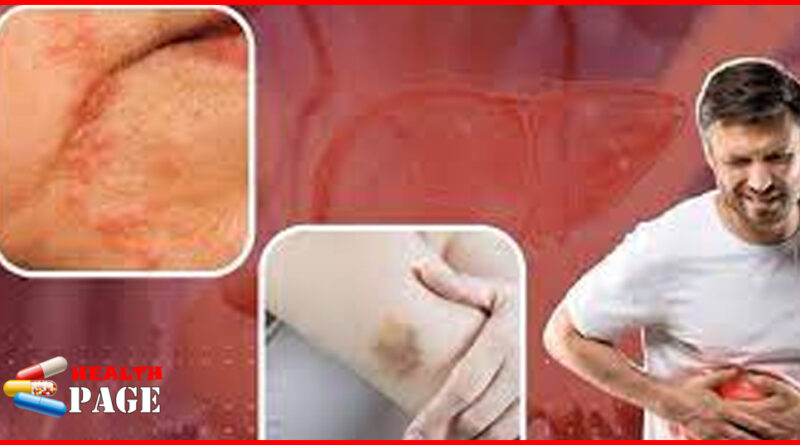Liver problems can be seen from the palms, skin, and complexion
As the saying goes, “If the liver is healthy, everything is good. If the liver is not healthy, you will die before you get old.”
But the liver is a “dumb organ”. Anatomy has found that there are no pain nerves on the liver, so this means that when the liver is damaged or diseased, it is difficult for us to feel obvious pain or discomfort.
Fortunately, when the liver becomes diseased, our body will show some “signs”. As long as we pay attention to these signals, we can detect liver problems in time.
Signal 1: Liver palms
Liver palms are a symptom that may occur during the development of liver disease. They are characterized by redness on both sides of the thenar and hypothenar eminences of the palm, while the palm is normal in color. The specific location is on the skin at the base of the thumb and little finger of the palm. The location is as shown in the figure below:

This erythema sometimes spreads to the entire palm, or even to the back of the hand. It is usually in the form of flake congestion, or red spots or plaques, which turn pale when pressed with fingers. This happens because the liver function is impaired when the liver is damaged or lesions occur. The metabolic inactivation function of estrogen is impaired to varying degrees, and estrogen accumulates in the body, stimulating the congestion and dilation of the capillaries, which over time form palms.
Signal 2: Spider nevus
Spider nevus is an idiopathic telangiectasia that mainly occurs in areas where the superior vena cava is distributed, such as the face, neck, upper chest, shoulders and upper limbs. Spider nevus is usually composed of a central arteriole and many capillaries radiating outward. The central nevus body is raised on the skin surface, and the capillaries extending outward are called spider feet.

How to accurately determine whether it is a spider nevus? Just click and you will know.
When you press the center point with your finger or cotton swab, the surrounding branches will temporarily disappear or turn white, and return to their original state after you release them. It will become a spider-like mole with small spiders radiating from the center to the sides. This is a “spider mole”.
If you find spider nevi on your skin and they do not disappear for a long time, or if the existing spider nevi suddenly increase significantly in size, it may indicate a problem with your liver, including: cirrhosis, acute hepatitis, viral hepatitis, drug-induced liver injury, liver cancer, etc.
However, the appearance of spider nevi is not always a sign of disease. Spider nevi can also appear in children aged 6 to 10 years old, adolescent girls, pregnant women, etc. Most of them will disappear naturally and will not affect health.
In the diagnosis of disease, if spider nevi and palms appear at the same time, it may indicate that the liver disease is more serious and requires timely medical treatment and examination and evaluation by a professional doctor.
Signal 3: Frog Belly

Frog belly is caused by liver damage or pathological changes, which leads to a large amount of fluid accumulation in the abdominal cavity, causing the abdomen to swell and resemble the belly of a frog. This condition usually occurs in the late stages of diseases such as cirrhosis and liver cancer. Due to severe damage to liver function, the ability to synthesize protein and absorb ascites decreases, resulting in a continuous increase in ascites.
The appearance of frog belly is one of the serious manifestations of disease and requires prompt treatment.
If cirrhosis is combine with ascites, the patient’s systemic symptoms will be more obvious. Due to impaired liver function, the patient may experience symptoms such as fatigue and weakness, as well as loss of appetite, and even symptoms such as indigestion, nausea, and vomiting. Discomfort or pain in the right upper abdomen may also occur. Which is cause by enlargement or inflammation. In addition, diarrhea is also one of the common symptoms.
Signal 4: Jaundice
Jaundice is by elevated bilirubin levels in the blood, which leads to yellowing of the skin, mucous membranes, and sclera. The essence is that the bilirubin level in the blood exceeds the normal range. Excessive bilirubin will penetrate into the skin and mucous membranes, causing the skin and sclera to turn yellow, which is why people turn yellow.

If the liver is damage, its ability to absorb and excrete bilirubin will decrease. Resulting in increase bilirubin levels in the blood. When bilirubin levels exceed the normal range, excess bilirubin will penetrate into the skin and mucous membranes. Causing yellowing of the skin, mucous membranes, and sclera, which is jaundice.
Signal 5: Liver disease face
Liver disease face is one of the common symptoms of patients. Mainly manifested as yellow, gray, dry and dull complexion.
Patients with liver cirrhosis often experience changes in skin color. Which is mainly due to impaired liver function, which leads to increased estrogen levels and the inability to metabolize melanin. High levels of estrogen inhibit the function of melanocytes, making it impossible for melanin to be metabolize normally and accumulate in the skin, causing changes in skin color.
In fact, not only cirrhosis. But also other patients with impaired liver function may also have similar changes on their faces. Severe dark circles under the eyes may be one of the early symptoms of patients with chronic liver disease. Most of which are chronic hepatitis B.
Finally, if you find yourself showing the above symptoms, you must be vigilant! !



Pingback: How much do you know about the causes of facial paralysis?
Pingback: A soft belly keeps away all diseases! People with soft bellies may be healthier.
Pingback: What are the health benefits of best milk thistle supplements?
Pingback: Let's know garlic benefits for health
Pingback: What You Need to Know About Adult Failure to Thrive ICD 10